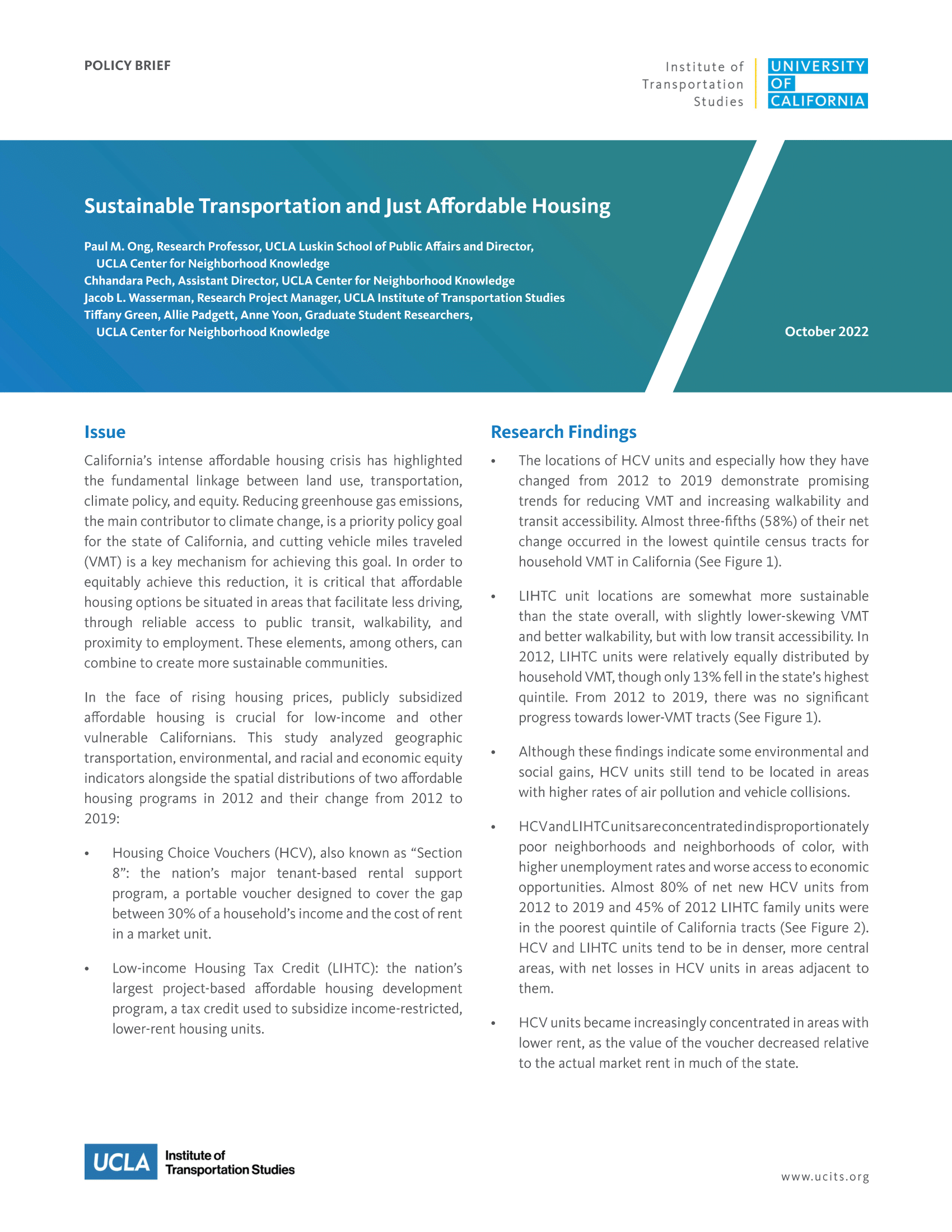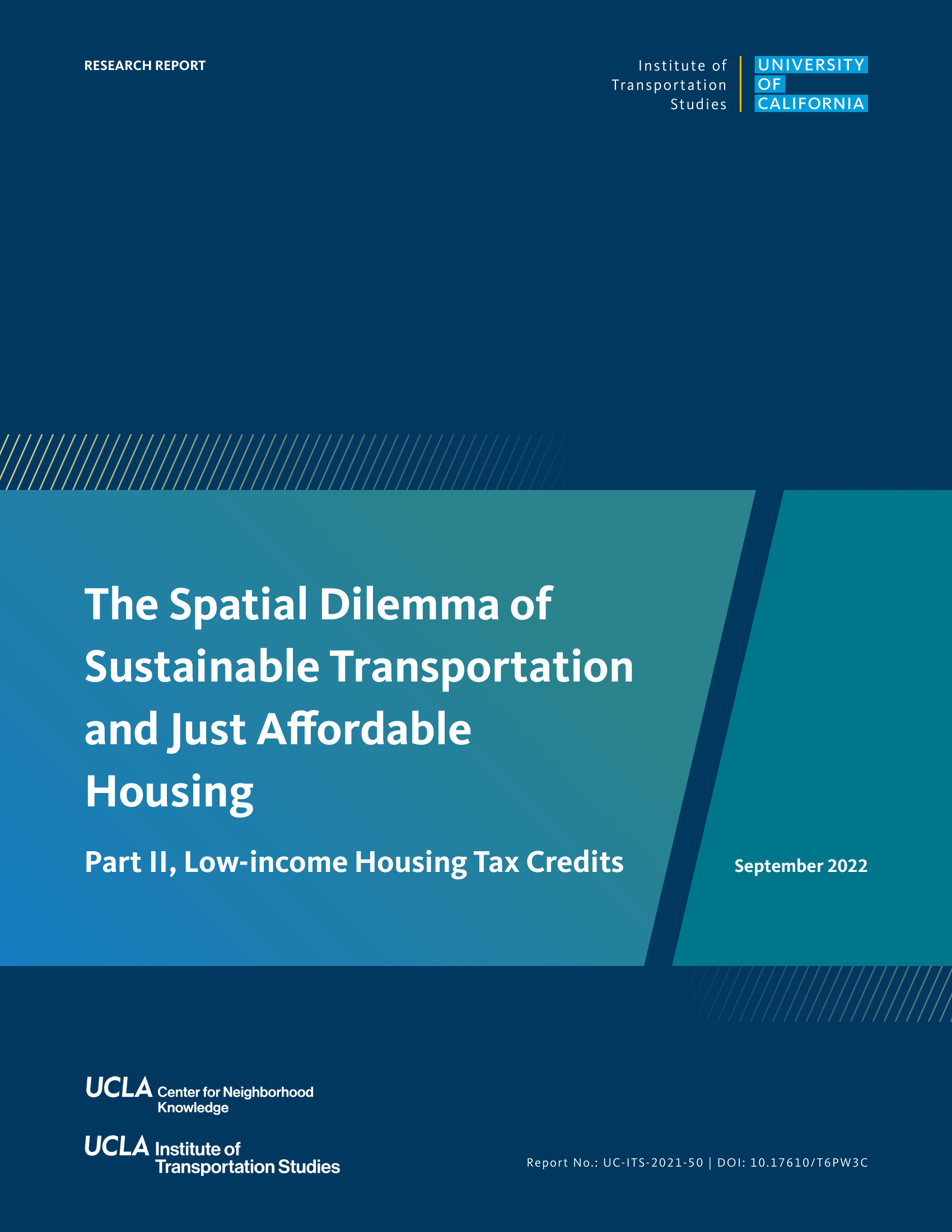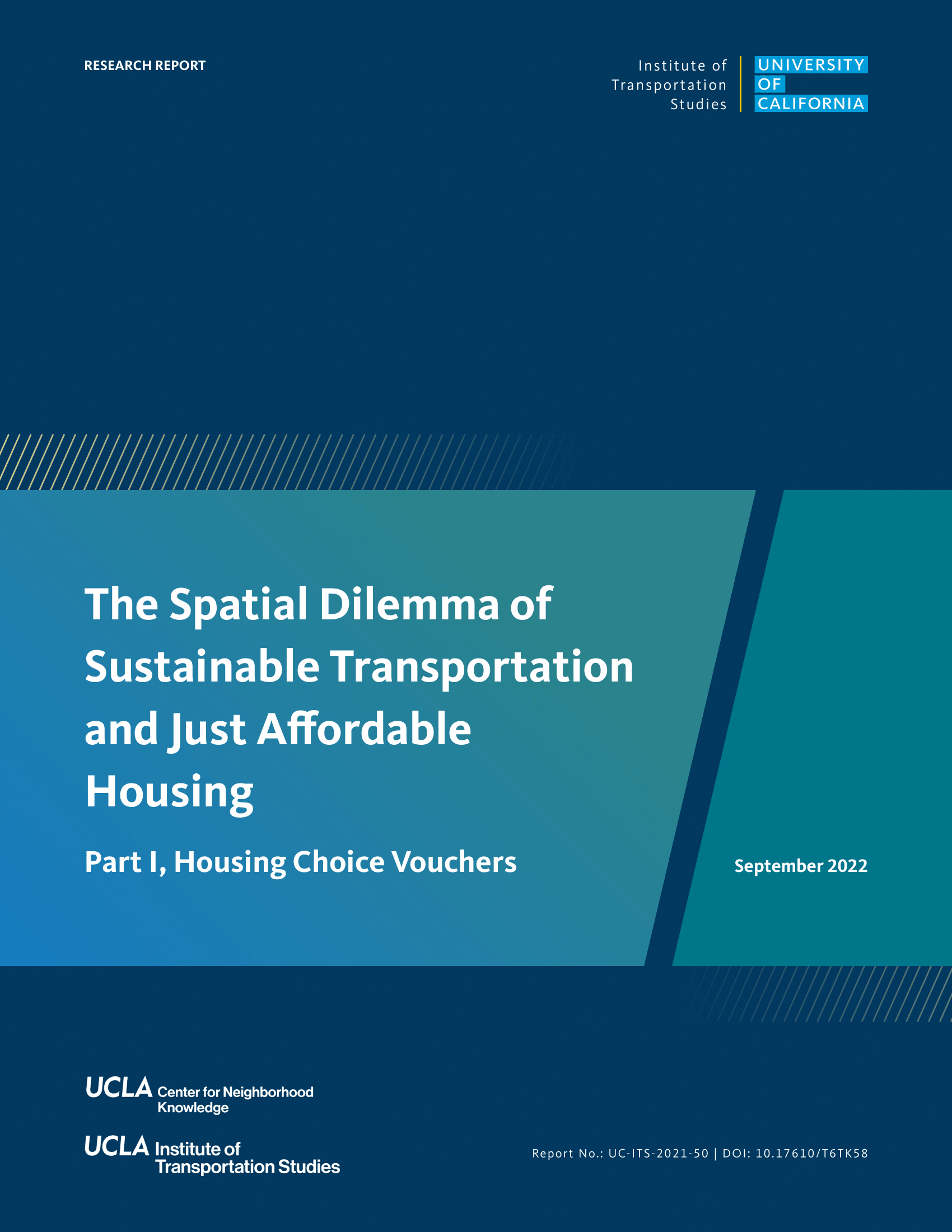Project ID:
LA2010Year Completed:
2022Project Description
This project examines the spatial distribution of tenant-based Housing Choice Voucher (Section 8) units and Low-income Housing Tax Credit units to understand whether geographic patterns and trends are consistent with climate change and equity goals. The analysis compares the location of HCV and LIHTC units in 2012 and net changes from 2012 to 2019 with a number of transportation, environmental, and racial and economic equity metrics. The change in HCV units from 2012 to 2019 shows promising trends for reducing vehicle miles traveled and increasing walkability and transit accessibility. LIHTC unit locations are, at best, somewhat more sustainable than the state overall, with slightly lower-skewing vehicle miles traveled and better walkability, though low transit accessibility. What environmental gains there were, though, come at the cost of higher exposure to pollution. HCV and LIHTC units are also concentrated in disproportionately low-income neighborhoods and neighborhoods of color, with worse access to economic opportunity. The findings reveal an inherent structural dilemma in whether the HCV and LIHTC programs are able to simultaneously achieve climate and equity goals.
Publications

Paul M. Ong (PI)
Research Team
Program Area(s):




